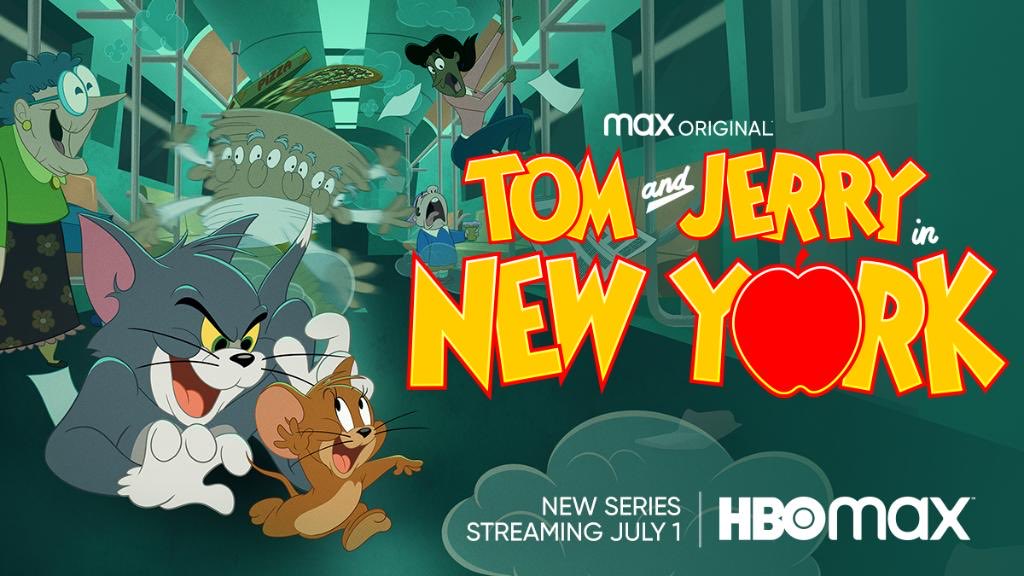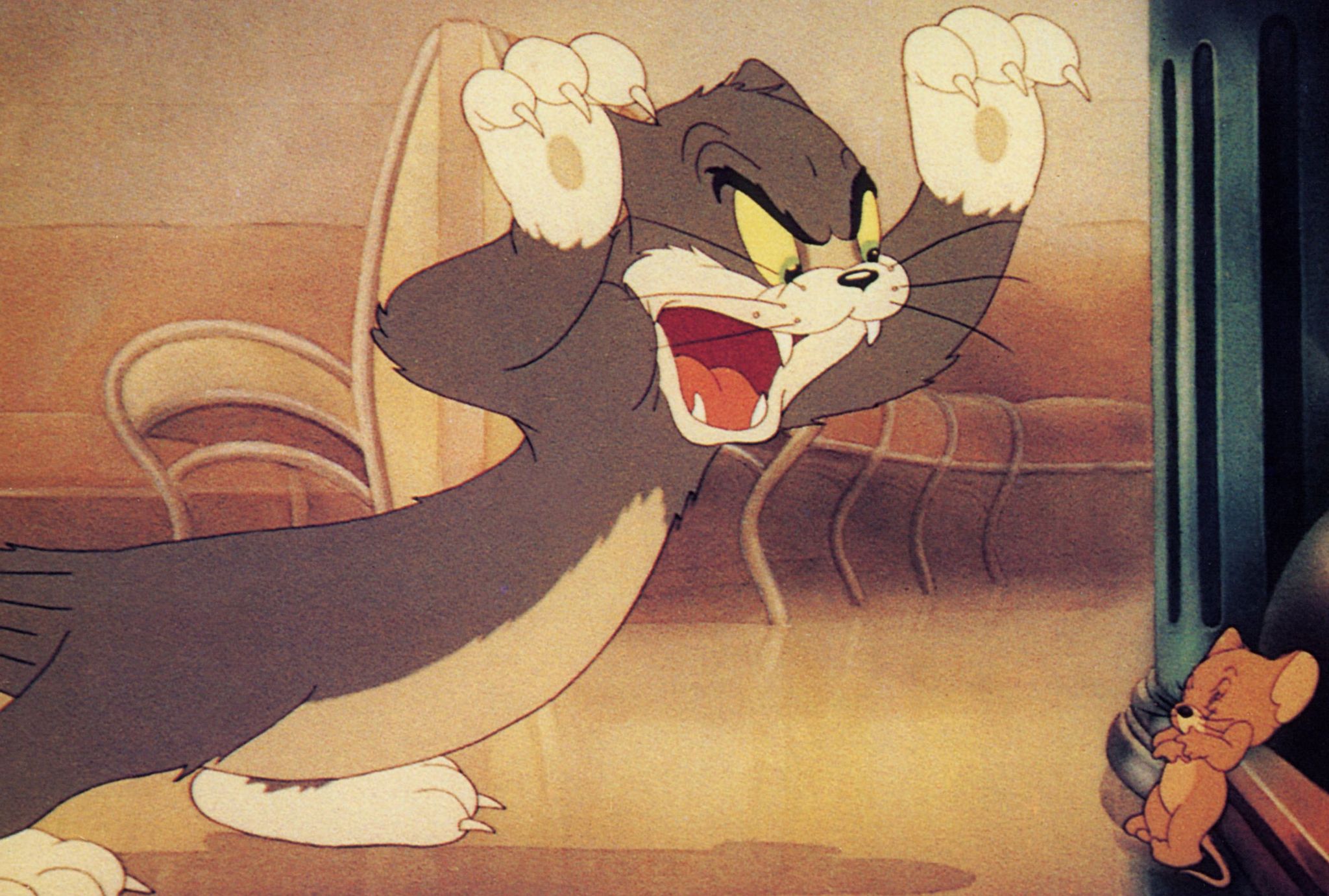
Won an Academy Award for Best Short Subject, Cartoon. Tom reads a book consisting of tips for catching mice. When Jerry hides in the dog pound, Tom disguises himself as a dog. The second of the cartoons that Tom is victorious over Jerry. Spike promises to protect Jerry from Tom by responding to the sound of a whistle. Jerry frees Spike the bulldog from the dog-catcher's truck.


The first of fourteen cartoons that Tom is victorious over Jerry. Tom inherits a million dollars on one condition: He must avoid causing harm to any animal, which Jerry uses to his advantage. Unusual for a Tom and Jerry cartoon, characters speak lengthy lines. Tom and Jerry try to impress Toots by wearing a zoot suit. Second cartoon where Tom and Jerry both lose. First cartoon to use "An MGM Tom and Jerry Cartoon" end titles. Blackface gag removed from Cartoon Network in the late 90's.Ī little girl dresses up Tom like a baby, prompting Jerry and Tom's feline friends to make fun of him.įirst appearance of Topsy. A missing scene involving ration stamps was removed from the reissue in 1950. Jerry wages war with Tom from his "cat raid shelter" in the basement.įirst cartoon to win an Academy Award for Best Short Subject, Cartoon. Unusual episode where Tom and Jerry speak. Rarely airs on Cartoon Network and Boomerang due to a gag reference of Adolf Hitler. They work together to prove Tom's worth as a mouse-catcher to Mammy. When Mammy Two Shoes kicks Tom out of the house after Jerry frames him, the mouse enjoys his freedom without Tom until he gets lonesome. The first time that Tom loses to another cat. Tom competes with an alley cat (Meathead) to see who gets Jerry first.įirst appearance of Meathead. Jerry flees from Tom by hiding with a chicken family. Tom and Jerry chase each other around a bowling alley.įirst cartoon featuring a sport as its theme. Re-released with Perspecta Stereo in 1958.
First cartoon where Tom and Jerry team up.įirst appearance of a love interest for Tom. Tom and Jerry team up to stop Spike the Bulldog from mauling both of them.įirst appearance of Spike (aka, Bulldog). First cartoon where Tom and Jerry both lose. US television prints cuts out Mammy Two-Shoes due to racially insensitive subject matter. Jerry plays tricks to scare the fur off of Tom. Also the first cartoon where Tom and Jerry both win. First cartoon to have William Hanna provide vocal effects for Tom. Nominated for an Academy Award for Best Short Subjects, Cartoons. Tom gets to know the spirit of giving when he begins to feel guilty after blockading the front door, trapping Jerry outside in the cold on Christmas Eve. Jerry attempts to outsmart Tom so he can get a snack from the refrigerator.įirst time Tom and Jerry are referred to by those names. First Tom and Jerry cartoon nominated for an Academy Award for Best Short Subject, Cartoon. Tom (here named Jasper) tries to stop the mouse Jerry (here named Jinx) from breaking plates and glasses before Mammy Two Shoes can kick the cat out.įirst appearances of Tom Cat (as Jasper), Jerry Mouse (as Jinx), and Mammy Two Shoes. Because of the 1965 MGM vault fire, all original film of pre-September-1951 MGM cartoons are lost, but luckily the backup prints is still (in spite of the altered reissue prints), although some production artwork relating to the missing material has survived, like pencil sketches. MGM also reissued its cartoons before the introduction of Perspecta Sound. Many pre-1952 cartoons were reissued with Perspecta Sound, which was introduced in 1954. Like the other studios, MGM reissued and edited its cartoons when re-released to theaters. Finally, 19 cartoons were produced in widescreen CinemaScope format only. Four cartoons were produced for both Academy Ratio and CinemaScope formats (2.55:1, later 2.35:1). Most of these cartoons were produced in the standard Academy ratio (1.37:1). Quimby retired in 1955 and from 1955 to 1957, Hanna and Barbera produced the shorts until MGM closed the cartoon studio in 1957, and the last cartoon was released in 1958. Rudolf Ising was the producer of Puss Gets the Boot subsequent cartoons were produced by Fred Quimby through 1955. All cartoons were released to theaters by Metro-Goldwyn-Mayer. The following 114 cartoons were directed by William Hanna and Joseph Barbera at the Metro-Goldwyn-Mayer cartoon studio in Hollywood, California. 4.3 2021: Tom and Jerry Special Shorts cartoonsġ940–1958: Hanna-Barbera/MGM Cartoons.4.1 2001: Hanna-Barbera Productions/Turner Entertainment cartoon.3 1963–1967: Chuck Jones/Sib Tower 12 cartoons.2 1961–1962: Gene Deitch/Rembrandt Films cartoons.


 0 kommentar(er)
0 kommentar(er)
